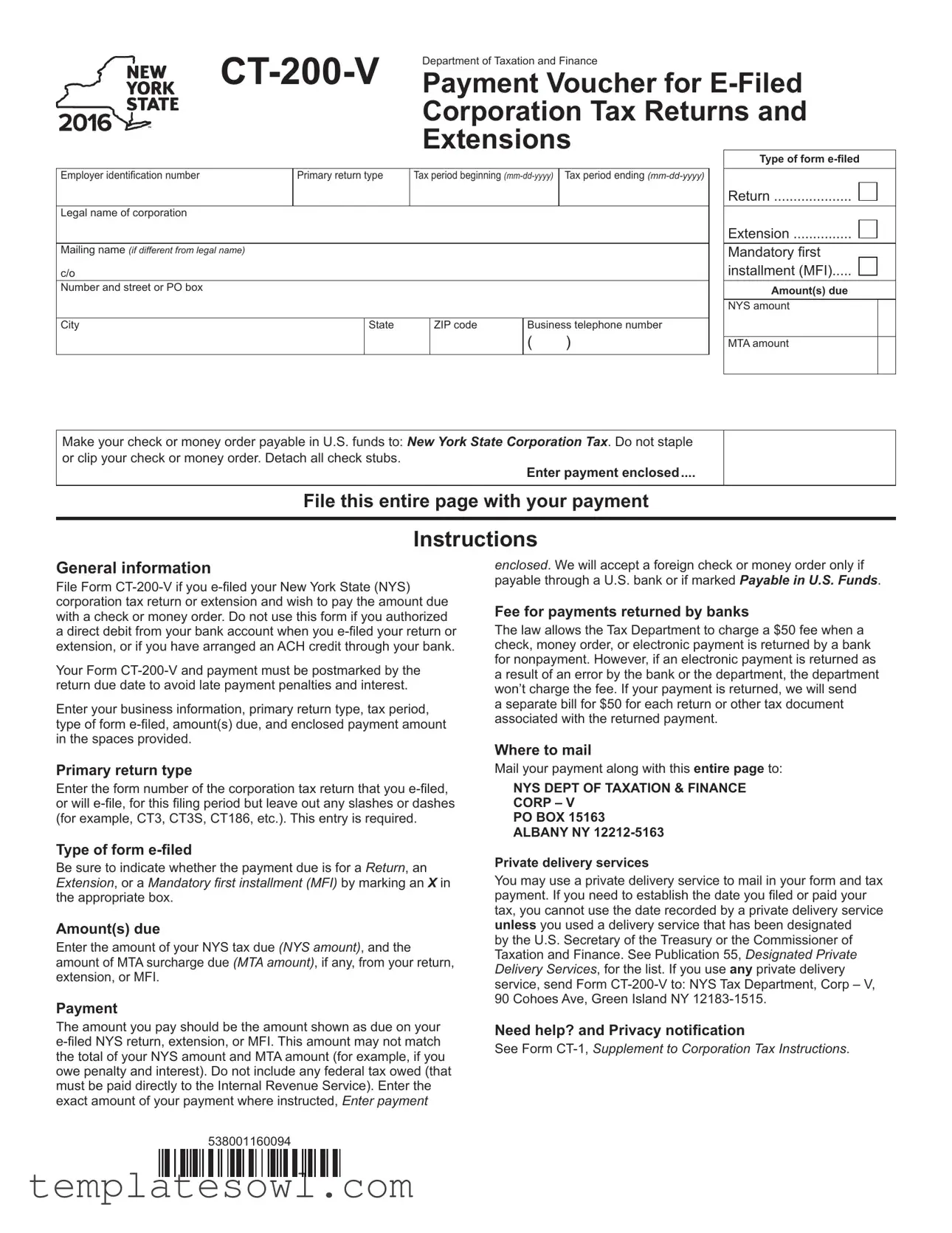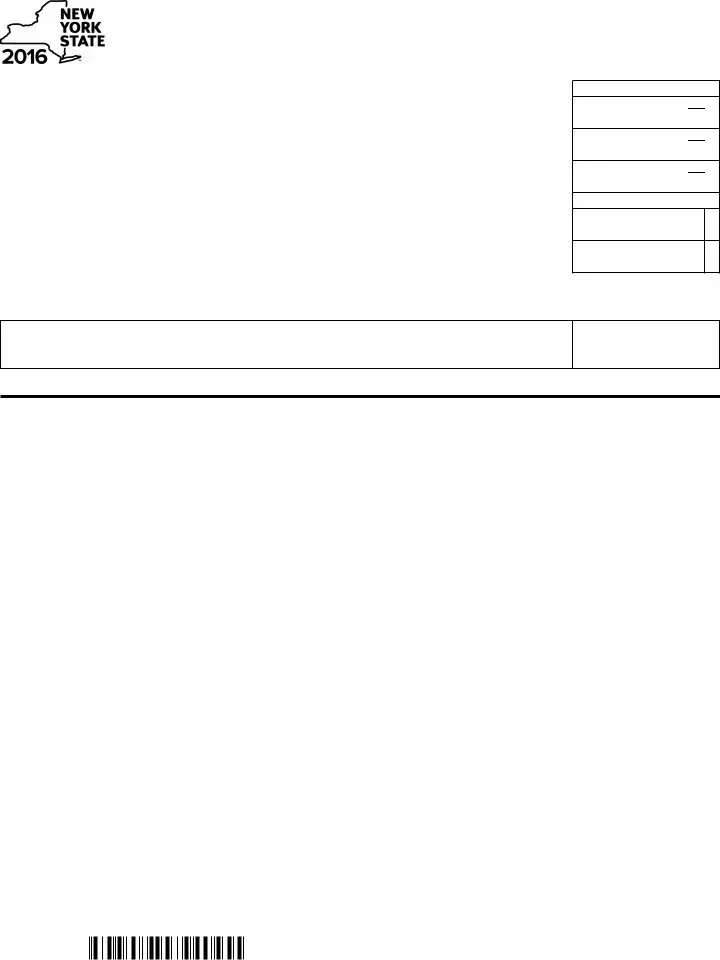What is the CT-200 V form used for?
The CT-200 V form is a payment voucher for New York State corporation tax returns that are filed electronically. If you have e-filed your corporation tax return or an extension and need to pay the amount due by check or money order, this form should be used.
Who needs to file the CT-200 V form?
If you are a corporation that has e-filed your New York State tax return or extension and will not authorize a direct debit from your bank account, you are required to file the CT-200 V form. This form helps ensure that your payment is associated correctly with your tax filing.
What information do I need to provide on the CT-200 V form?
You will need to include several key pieces of information: your Employer Identification Number (EIN), the primary return type, and the tax period dates. Additionally, you should indicate the type of form you e-filed (return, extension, or Mandatory First Installment), as well as the amounts due for state tax and any MTA surcharge.
What payment methods are accepted with the CT-200 V form?
The form accepts payments made by check or money order in U.S. funds. It is important to ensure that your payment does not include any federal tax amounts owed, as those should be paid directly to the IRS. Make sure to write your payment enclosed amount in the designated space on the form.
Where should I submit the CT-200 V form and payment?
Mail your completed CT-200 V form along with your payment to the NYS Department of Taxation and Finance at the specified address:
NYS DEPT OF TAXATION & FINANCE
CORP – V
PO BOX 15163
ALBANY NY 12212-5163.
If using a private delivery service, the address is different; make sure to follow the guidelines provided in the form instructions.
What are the consequences of late payments with the CT-200 V form?
Your CT-200 V form and payment must be postmarked by the due date to avoid late payment penalties and interest. If payments are made after the deadline, penalties will accrue. It is crucial to send your payment on time to avoid extra fees.
What happens if my payment is returned?
If your check, money order, or electronic payment is returned by the bank for nonpayment, the Tax Department may charge a fee of $50. You will receive a separate bill for this fee. However, no fee will apply if the return was due to an error on the part of the bank or the department.
Where can I find additional help or information?
If you have further questions or need assistance, refer to Form CT-1, Supplement to Corporation Tax Instructions. Also, consider consulting Publication 55 for details on designated private delivery services and other related matters.






